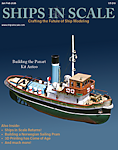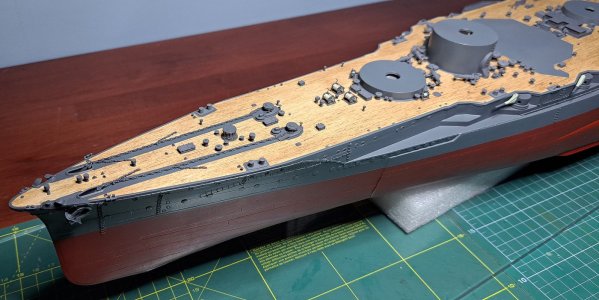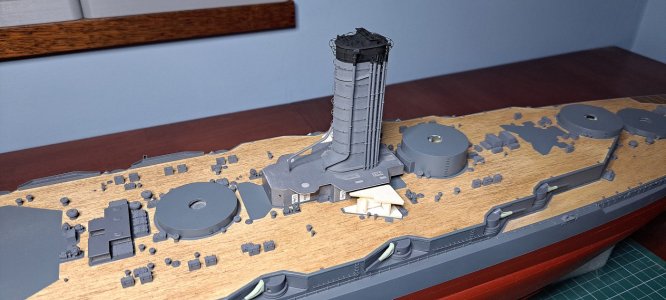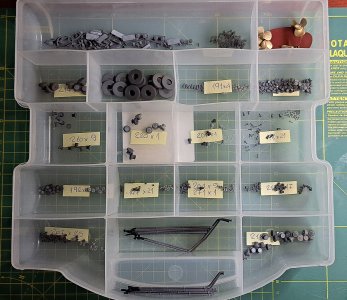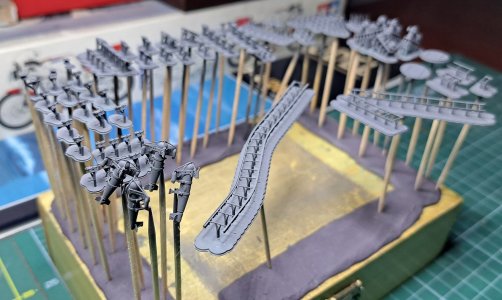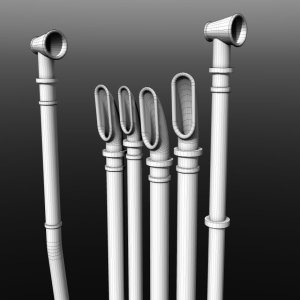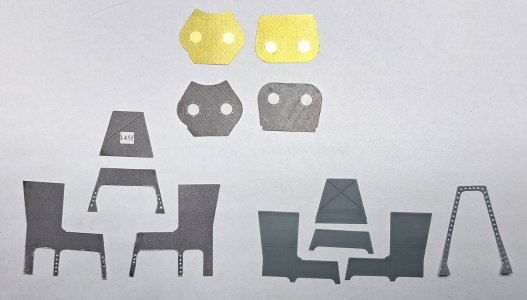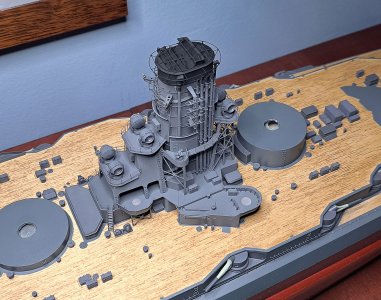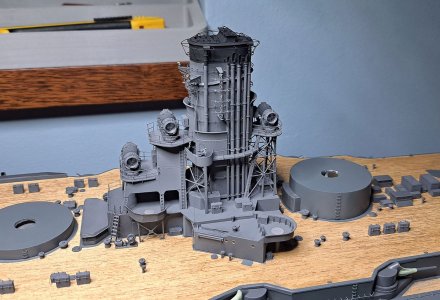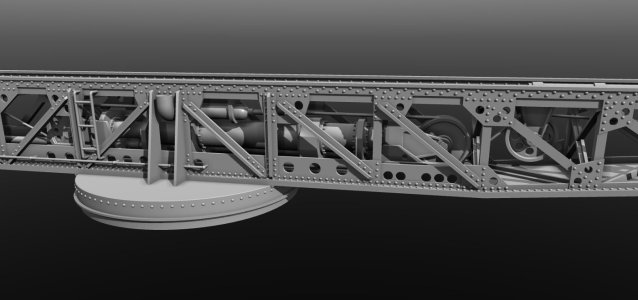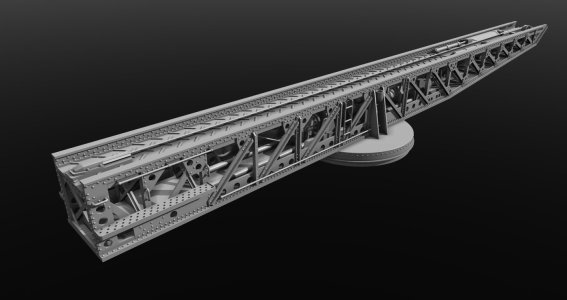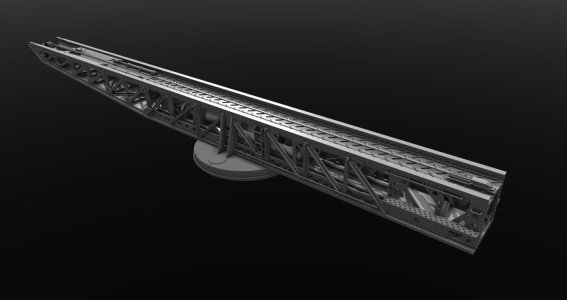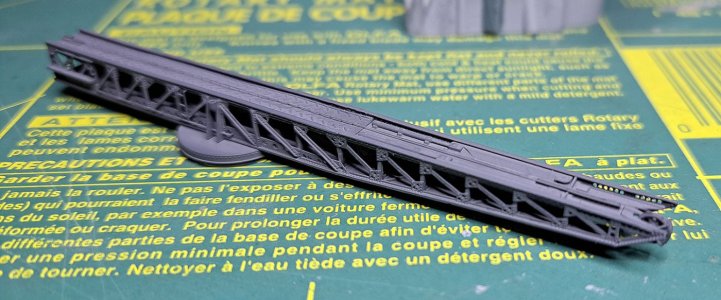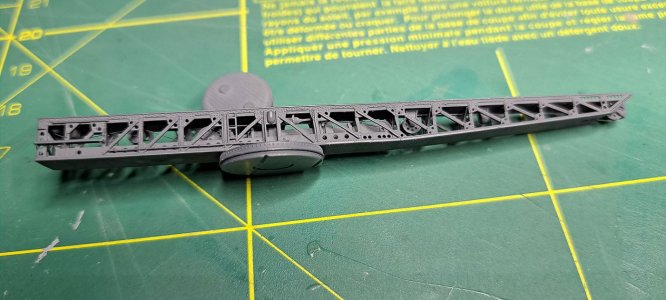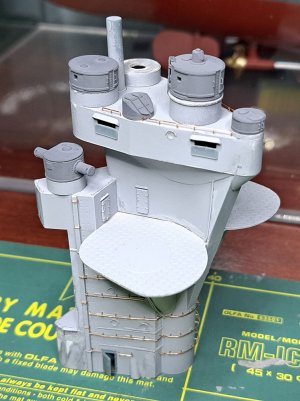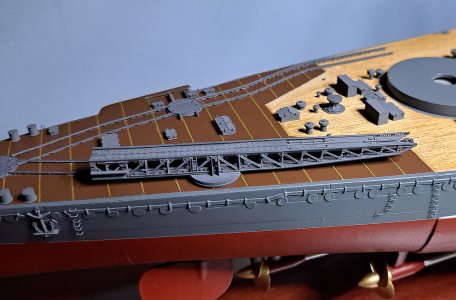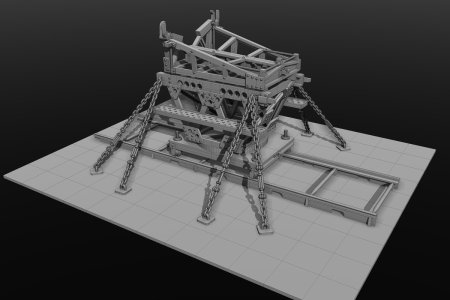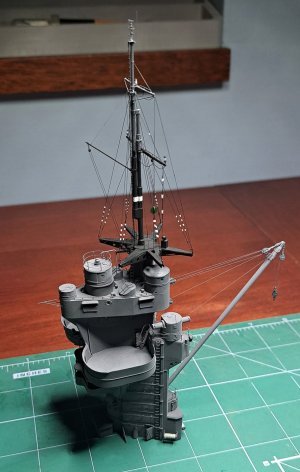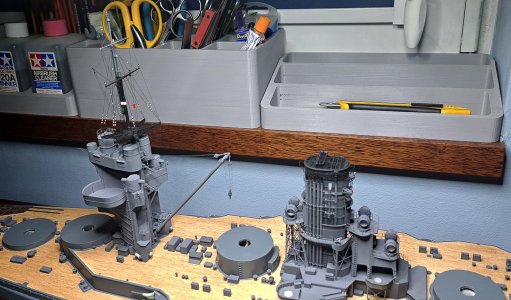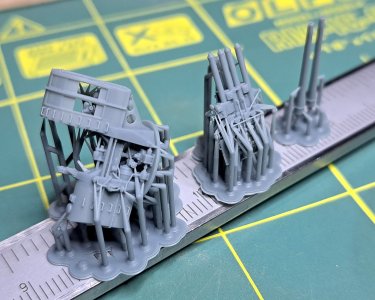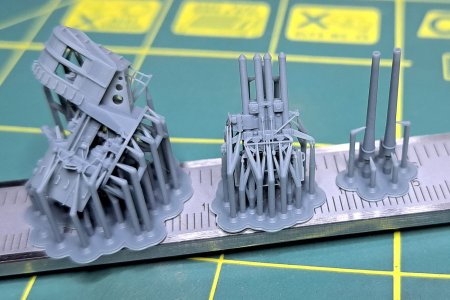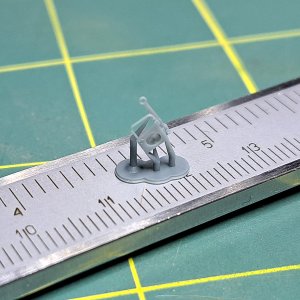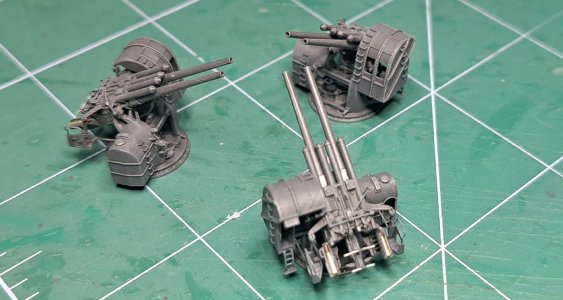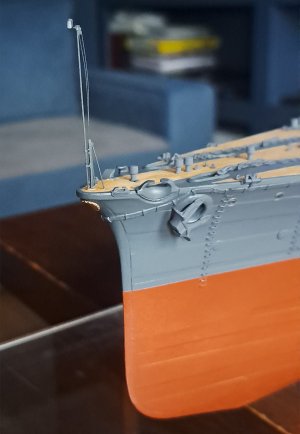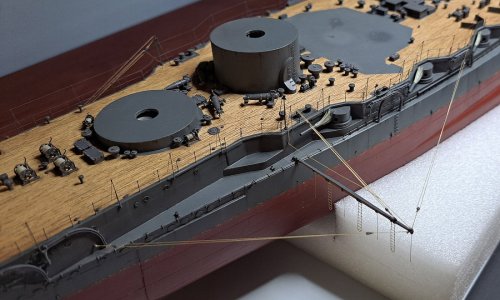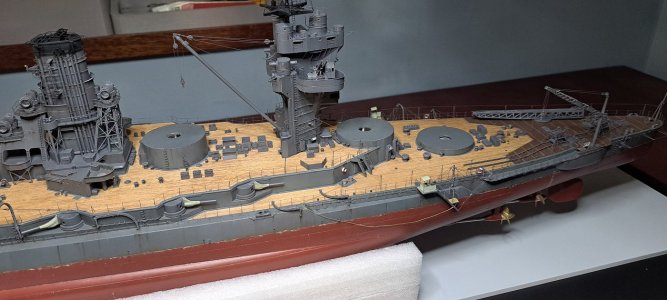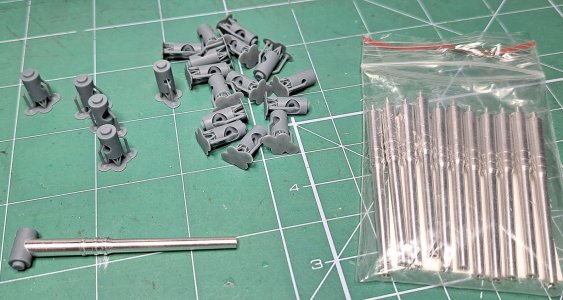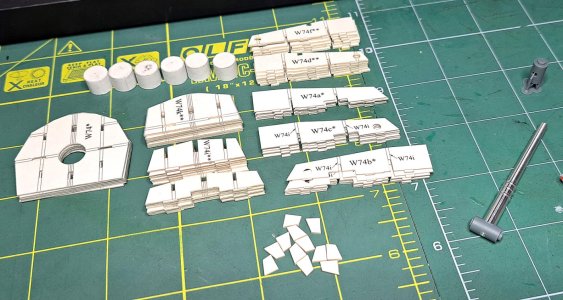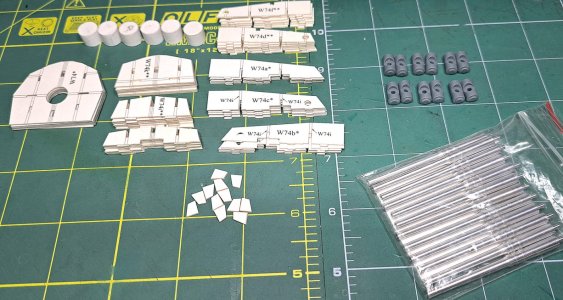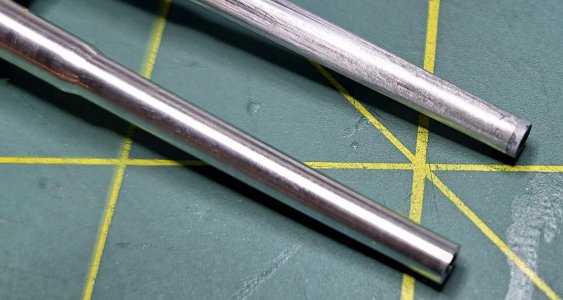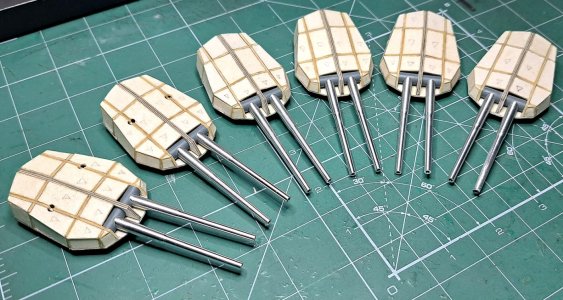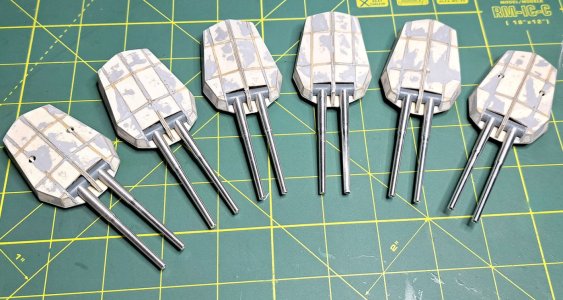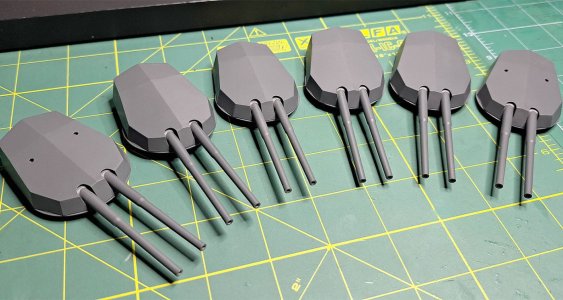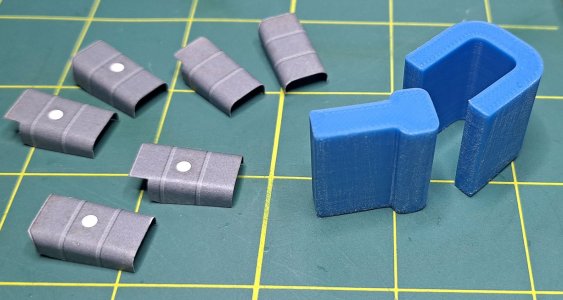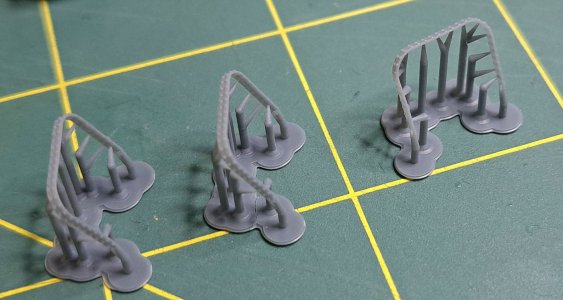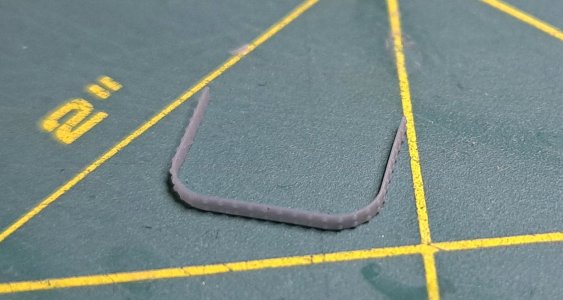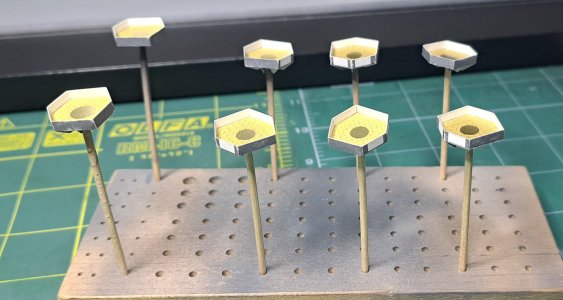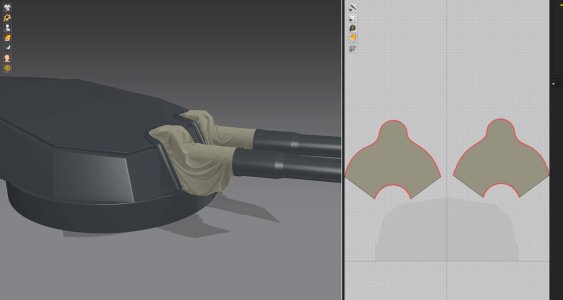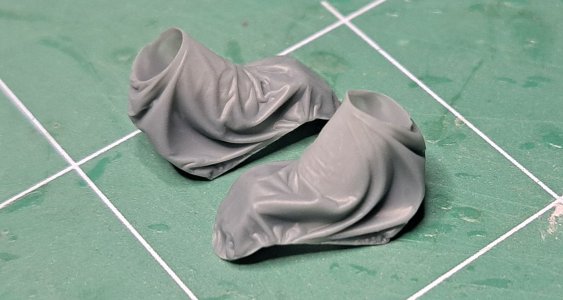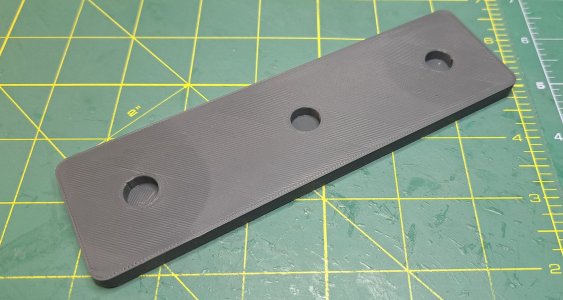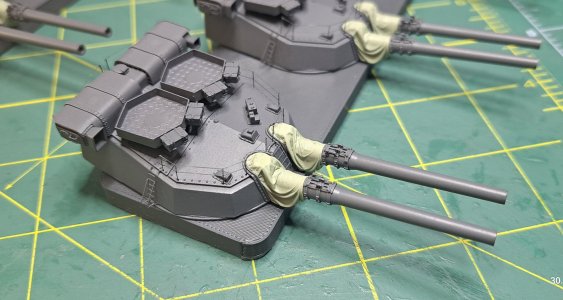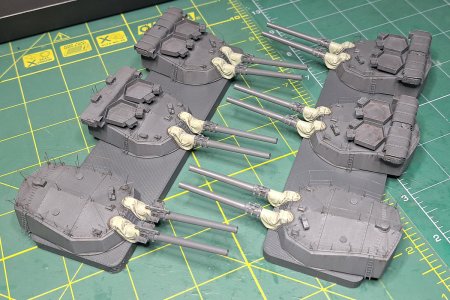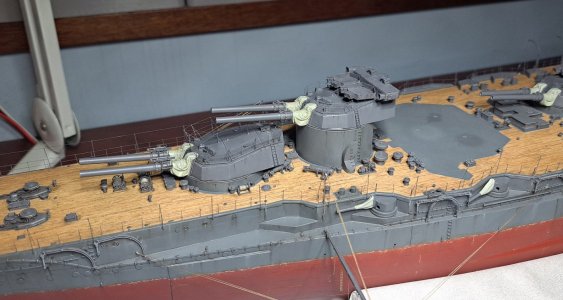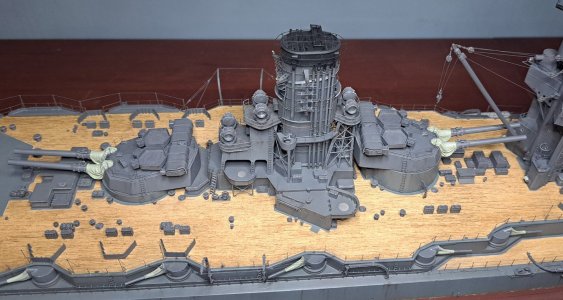- Joined
- Aug 19, 2020
- Messages
- 26
- Points
- 78

I decided to copy the whole build thread from another forum, so sorry for dropping so many posts one after another. From now on, I’ll be updating this thread more regularly. Moving on...
I would like to present you with a slightly shortened version of the progress report from the construction of my paper (and 3D printed) model of the IJN Fuso battleship in 1/200 scale.
I will make a short introduction to bring you up to date. I started this model around January 2010, which was a long, long time ago. Unfortunately, every time I tried to return to this model, I always had some personal issues in my life.
The hull was based on a cardboard model from Military Model No. 1-2/2007.
Below are some photos of how I started and where I was at the beginning of 2022.
Hull frames:
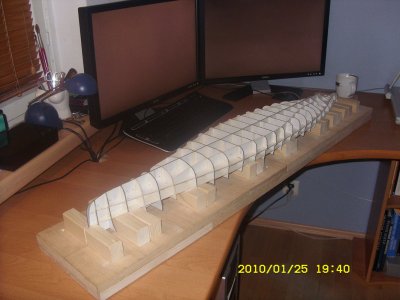
After a lot of work, I finally got a base shape:
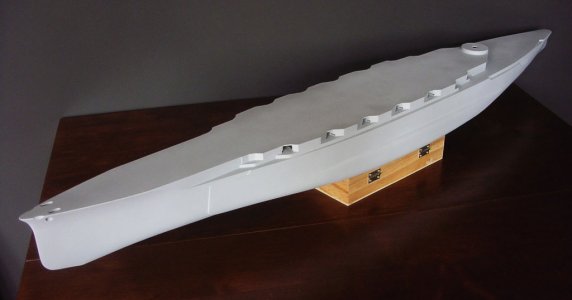

Wooden deck:
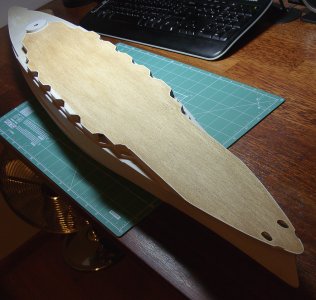
Hull ready for painting:
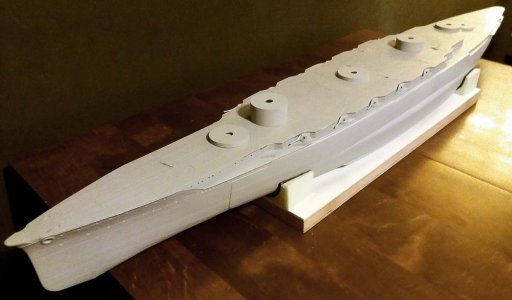
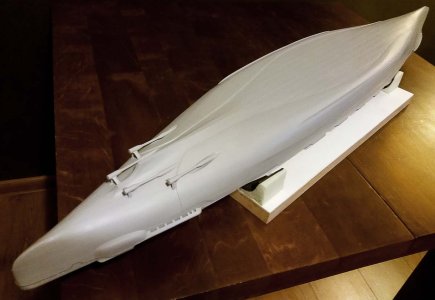

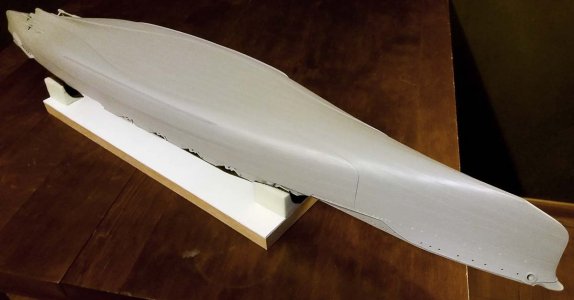
Hull painted:
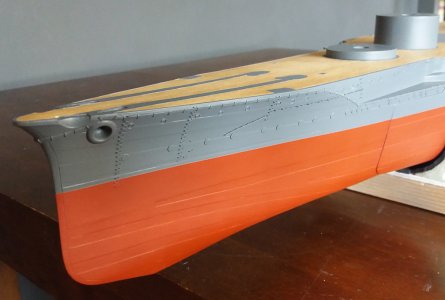
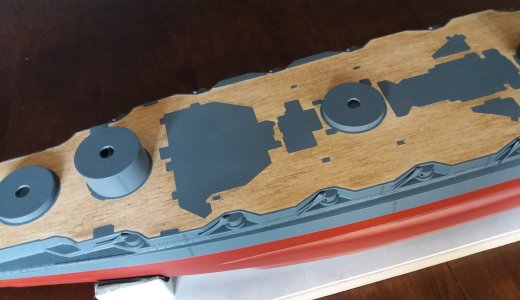



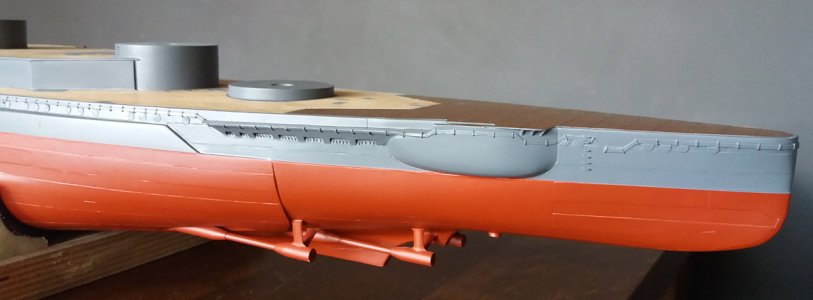
I would like to present you with a slightly shortened version of the progress report from the construction of my paper (and 3D printed) model of the IJN Fuso battleship in 1/200 scale.
I will make a short introduction to bring you up to date. I started this model around January 2010, which was a long, long time ago. Unfortunately, every time I tried to return to this model, I always had some personal issues in my life.
The hull was based on a cardboard model from Military Model No. 1-2/2007.
Below are some photos of how I started and where I was at the beginning of 2022.
Hull frames:

After a lot of work, I finally got a base shape:


Wooden deck:

Hull ready for painting:




Hull painted:








